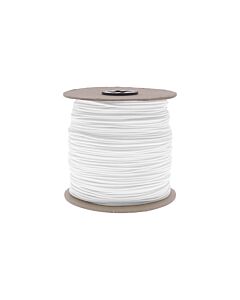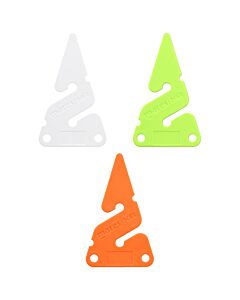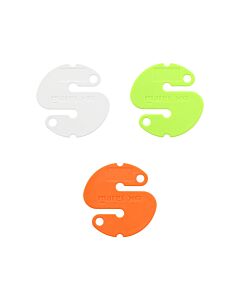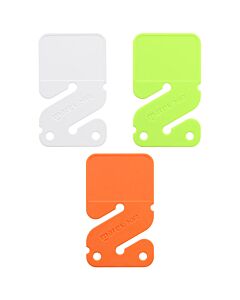Line - Markers
-
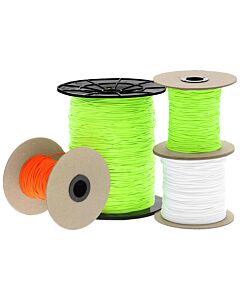 DGX Hi-Viz Polyester LineAs low as 5 cents per foot
DGX Hi-Viz Polyester LineAs low as 5 cents per foot -
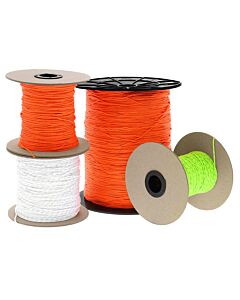 DGX Ultra-Viz™ Retroreflective LineAs low as 10 cents per foot
DGX Ultra-Viz™ Retroreflective LineAs low as 10 cents per foot -
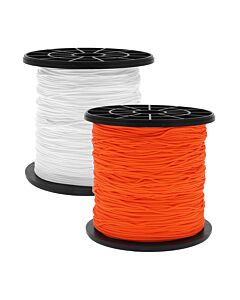 Dive Rite Nylon Line$60.00
Dive Rite Nylon Line$60.00 -
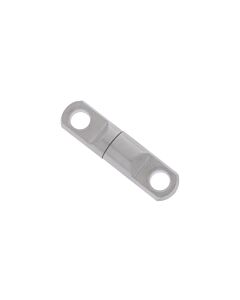 Line Swivel$2.50
Line Swivel$2.50 -
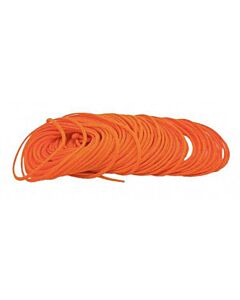 Apeks Replacement Line for Lifeline SpoolsAs Low As $28.00
Apeks Replacement Line for Lifeline SpoolsAs Low As $28.00 -
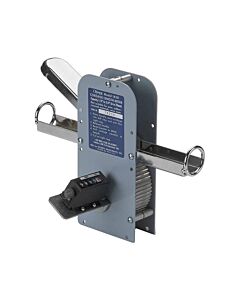 Reel Reload ServiceSelect reel & line to see price
Reel Reload ServiceSelect reel & line to see price -
 DGX Line Arrow$1.00
DGX Line Arrow$1.00 -
 DGX Line Cookie$1.00
DGX Line Cookie$1.00 -
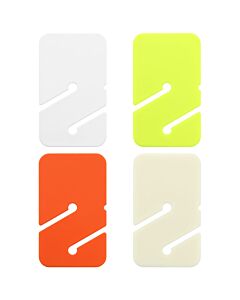 DGX Line Square (REM)$1.00
DGX Line Square (REM)$1.00
Characteristics of Line on Dive Reels and Finger Spools
Traditionally, the line on dive reels is a braided thermoplastic fiber made from polyamide (aka Nylon and PA) or more recently polyester terephthalate (aka Dacron and PET) ; each have their pros and cons. Both are strong, but nylon has significantly more elasticity while polyester has very little stretch. In water, nylon tends to become a little 'soggy' and swell slightly thus losing about 15% of its strength, while polyester retains 100% of its strength remaining 'crisp' and resilient when wet. Polyester has better resistance to abrasion and oil products, plus it is significantly more resistant to degrading from UV exposure. Polyester also noticeably better absorbs and retains the high-visibility color dyes (Orange or Chartreuse, Which is Better?). Many divers prefer polyester line claiming it deploys 'smoother' from the reel and is noticeably stronger; other divers still prefer nylon claiming its elasticity makes it easier to handle and 'tie off' in guideline applications. A few dive equipment manufacturers have been experimenting with high performance thermoplastics such as polyethersulfone (PES) and ultra-high-molecular-weight polyethylene (UHMWPE). These newer materials are many times the strength of polyester.
| Material Trade name |
Polyethersulfone Ultrason |
UHMWPE Dyneema |
Polyester Dacron |
Polyamide Nylon |
|---|---|---|---|---|
| Dry Tenacity (cN/dtex)
|
28 - 38
|
28 - 38
|
7 - 8
|
6 - 7
|
| Elongation at break (%)
|
28
|
3.5
|
10 - 16
|
16 - 27
|
| Specific gravity (g/cm
3)
|
1.37
|
0.98
|
1.38
|
1.15
|
| Melting point (°C)
|
227
|
149
|
260
|
220
|
| Abrasion resistance
|
excellent
|
very good
|
excellent
|
very good
|
| UV resistance
|
poor
|
very good
|
excellent
|
good
|
| Salt resistance
|
excellent
|
excellent
|
good
|
good
|
| Resistance to oil products
|
excellent
|
excellent
|
excellent
|
good
|
| Knot strength (%)
|
55 - 60
|
35 - 50
|
55 - 60
|
60 - 65
|
The size code numbers that describe the diameters of nylon guideline used in cave diving are from an archaic nomenclature for what is termed "twine" (braided string) and each # code describes an approximate thickness range in fractions of an inch. There does not appear to be an established standard (if you know of one, please tell us); size charts vary depending on the cordage manufacturers who each publish their own version for their products. There are four sizes normally seen on guideline reels: #36 and #24 are most common for nylon with #21 and #18 most common for polyester because it is stronger. The thinner the line the more length that can be fit on a given size reel or conversely the smaller the size of the reel for a given length. However, #18 is approaching the minimum diameter practical for manageable line handling in diving applications.

